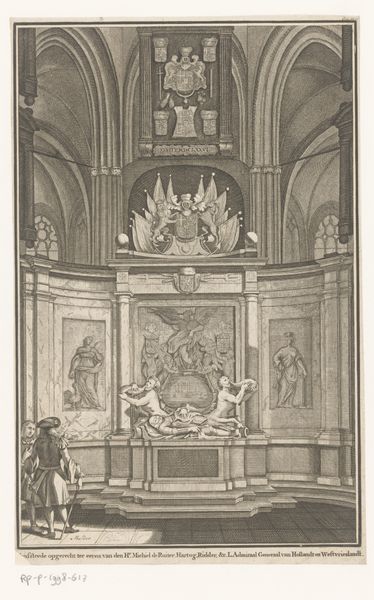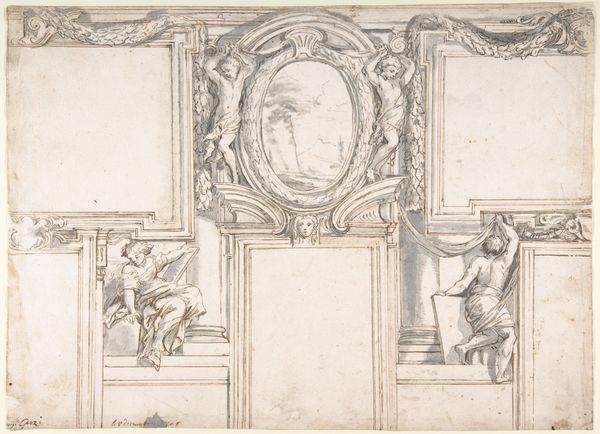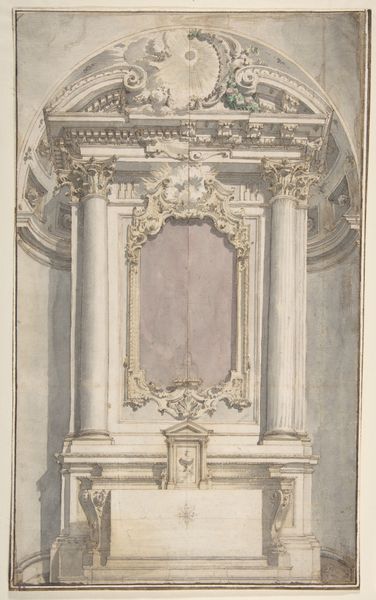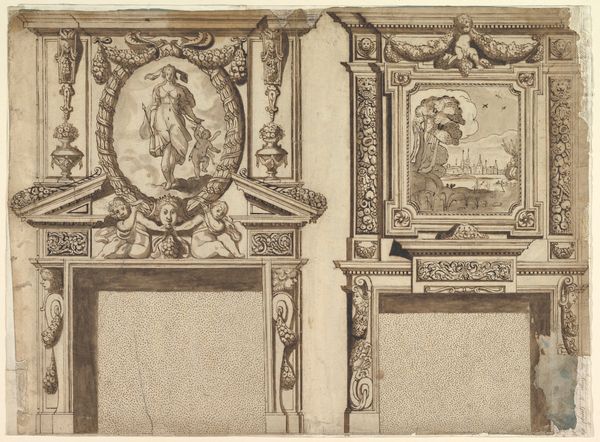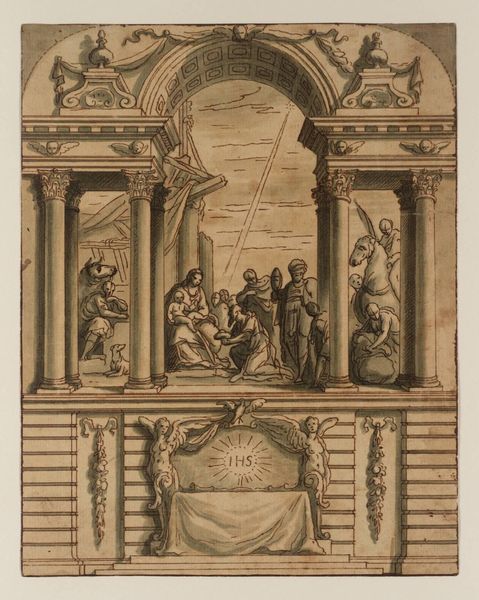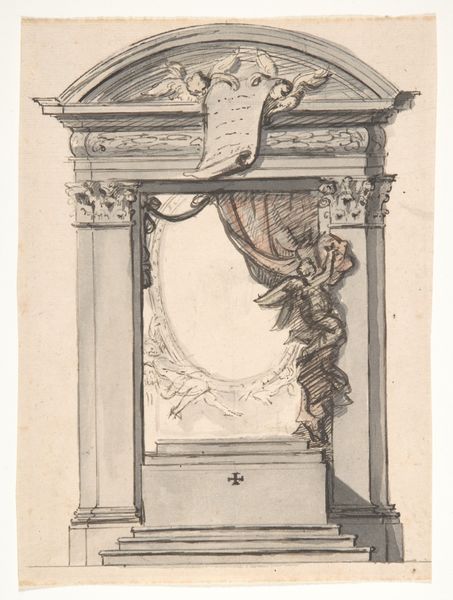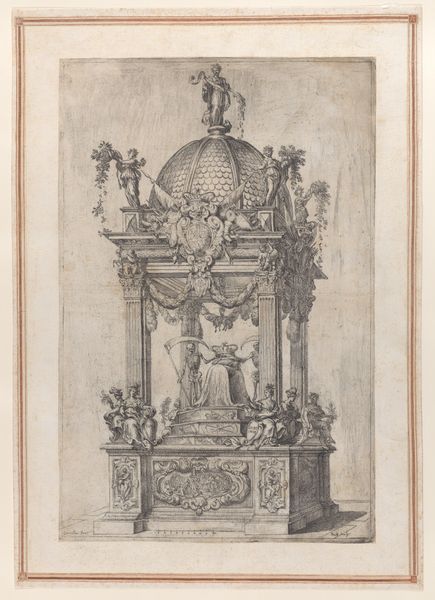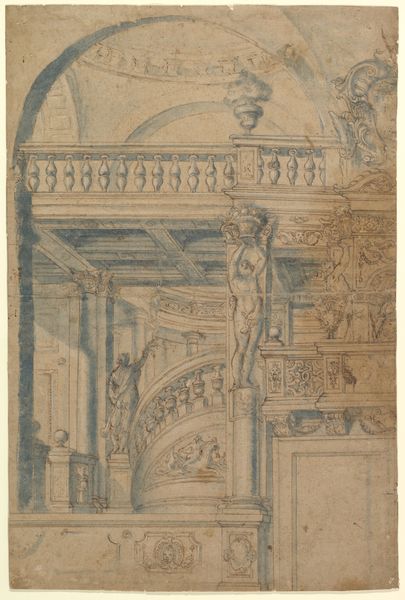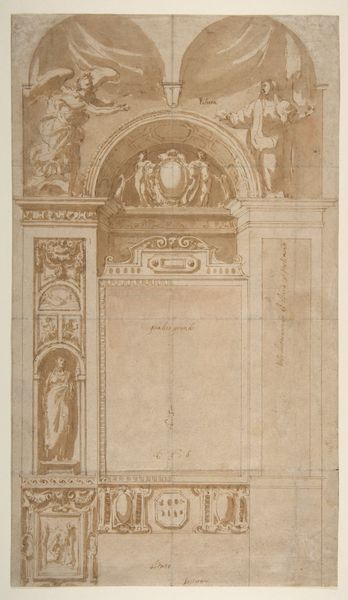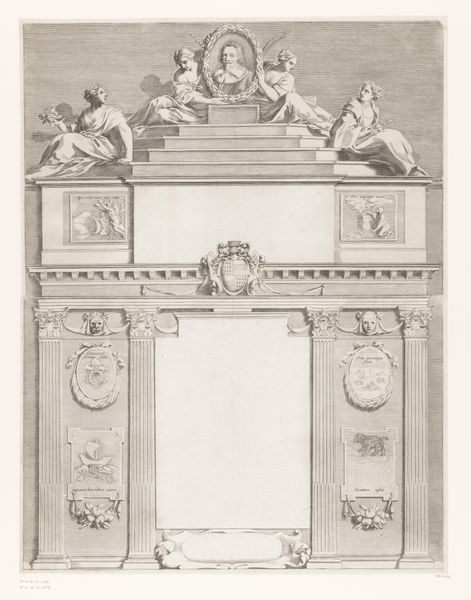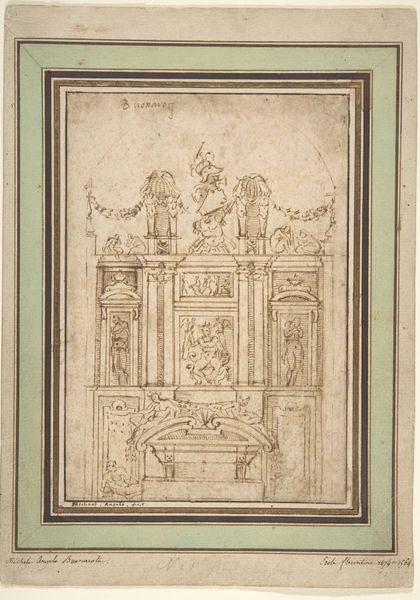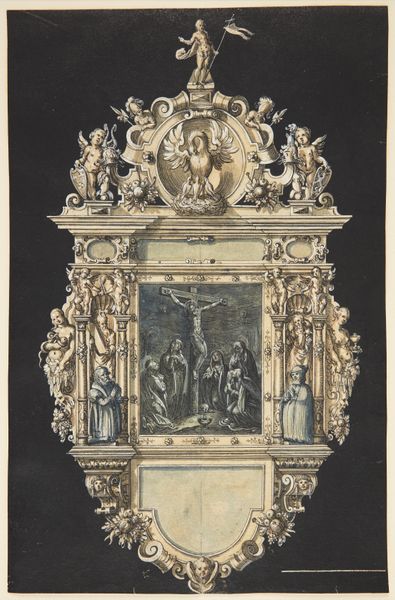
drawing, print, pencil, engraving, architecture
#
drawing
#
neoclacissism
# print
#
pencil
#
engraving
#
architecture
Dimensions: 17 x 10 in. (43.2 x 25.4 cm)
Copyright: Public Domain
Editor: This is Pietro Fancelli's "Design for a Monument," created sometime between 1764 and 1850. It's a drawing, combining pencil, engraving, and printmaking techniques, it seems. I am struck by how clearly it defines material differences through line work. How do you interpret the piece, especially given its architectural subject? Curator: From a materialist perspective, I'm particularly interested in how Fancelli, through this drawing, mediates between the imagined monument and its potential material reality. Consider the layering of media – pencil underdrawing, engraved details, the possible print elements – each stage represents a transformation of the artist’s idea, a working through its physicality before it ever becomes stone or bronze. What does the heavy use of drawing mean for architecture at this time? Editor: So, the process is key? I notice the use of what looks like marble or at least the illusion of it, and the cherubs…does the rendering of the materials speak to the function of this proposed monument? Curator: Absolutely. The monument, if built, would inevitably engage with labor. The drawing allows us to think about the exploitation of stone, the skilled craftsmanship required for carving, and even the social status such an ostentatious monument represents. Look closely at the seemingly casual pencil marks, how they create a fiction of texture and depth. What level of labor would be necessary to render this imagined construction? Editor: So it's a drawing about more than just the monument; it’s also a comment on the world that produces and consumes such displays. I never thought about architectural drawing this way before! Curator: Precisely! And think about the function of prints at this time for widespread distribution, allowing access to luxury designs. What contradictions exist between the elite world these monuments represent, and their presence in reproducible and democratized forms of media? Editor: I see! Thanks, this has given me so much to consider about not just *what* is represented, but *how* and *why*. Curator: My pleasure. Analyzing art from a materialist lens, appreciating both its tangible aspects and socioeconomic implications, transforms how we perceive it.
Comments
No comments
Be the first to comment and join the conversation on the ultimate creative platform.
